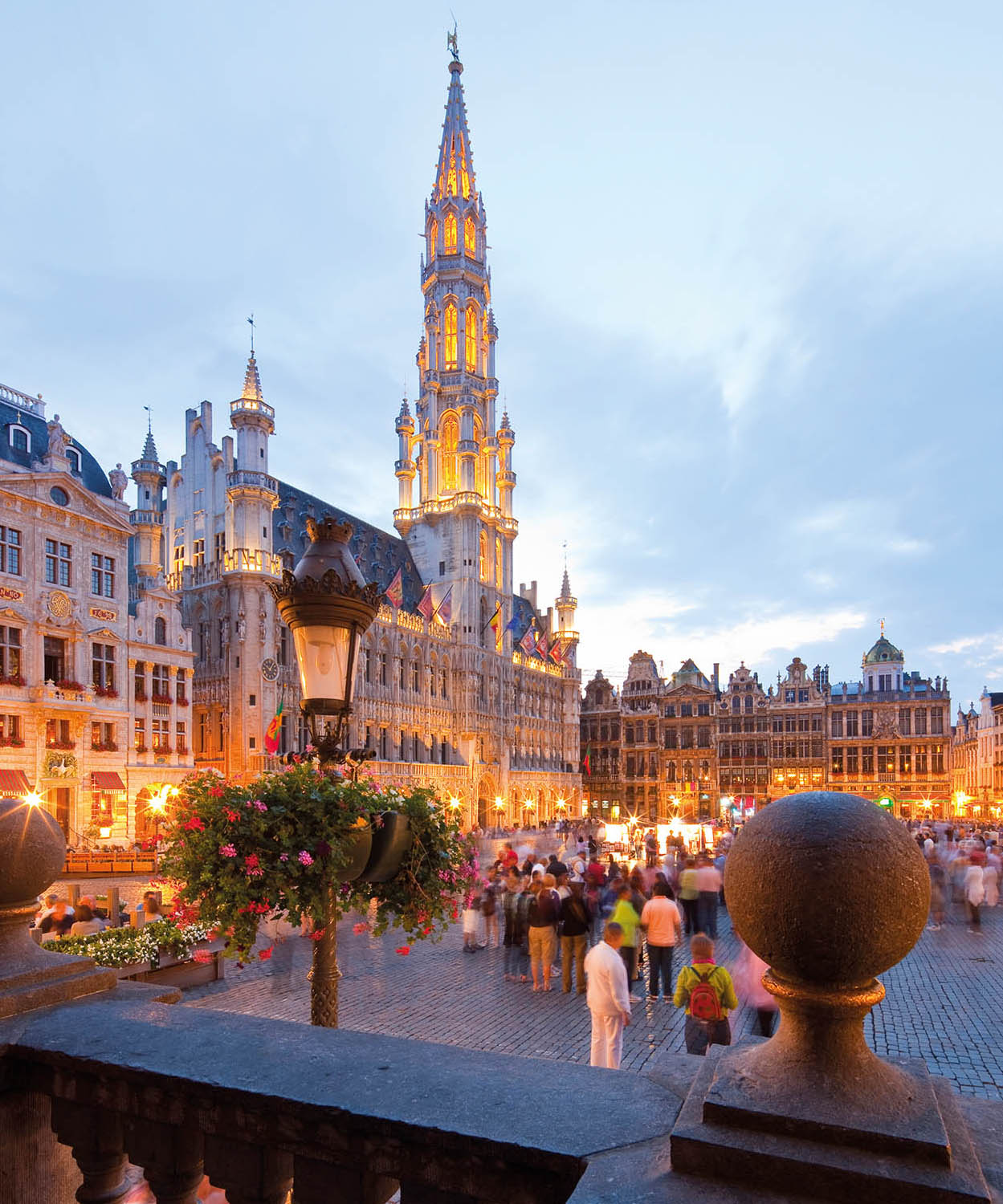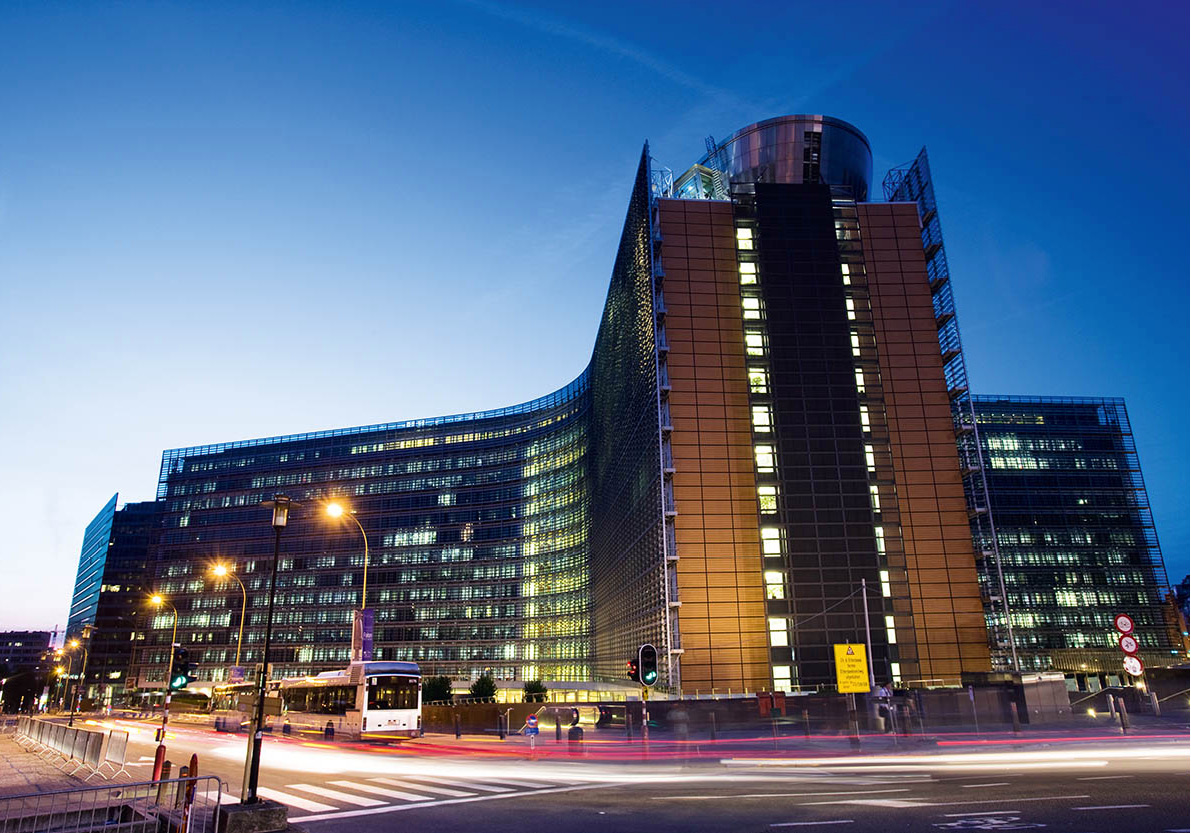Brussels is the capital of Belgium, a small country of 11.5 million people set between the Netherlands in the north, France in the south and Germany in the east. The city lies roughly in the centre of the country, and along the line that divides Belgium into Dutch-speaking Flanders in the north and French-speaking Wallonia in the south. When Belgium gained its independence in 1830, Brussels was at first cast in a purely domestic role. Since the end of World War II, however, this city of close to two million has evolved into an international centre. The headquarters of NATO are here, and the city hosts several key institutions of the European Union (EU). Although Strasbourg and Luxembourg also host EU institutions, no one denies that Brussels is the focal point of the Union. Brussels is an international and cosmopolitan city, where many people speak at least two languages, and English speakers have few problems being understood, where the demand for office space is sky-high, and the international airport is one of the fastest-growing in Europe.
Historic Town
Small by international standards − the city centre can be crossed on foot in about 30 minutes − Brussels is decidedly people-friendly. It has a buoyant native population that fills the streets with vibrancy by day and makes it one of the safest of the world’s major cities by night. It is a city of delights, and one that has the capability to constantly surprise with its architecture, gastronomy and nightlife.
Brussels has been at the heart of European history for much of the last millennium. A trading town on the lucrative route from Eastern Europe to England, it was the leading northern city of the vast Spanish European Empire during the 17th century and, after Vienna, of the wealthy Habsburg Austro-Hungarian Empire in the 18th century. However, though Brussels continues to flirt with Europe, it is first and foremost a Belgian city.

The Town Hall on the Grand-Place
iStock
Trading Places
In addition to being a diplomatic centre, it has always been a working and trading town. The pearl that is the old heart of Brussels began its life around the seed of a marketplace in the 14th century. You will discover that many of the street names in the old town hark back to this time, when traders would set up stalls along the narrow, cobbled alleys. Cheese Market, Chicken Market, Grass Market and Butchers’ Row – the names conjure up images of bustling medieval Brussels. These same streets still earn their keep, sustaining modern visitors with bars and restaurants. The guilds that controlled the skilled trades built large and ornate houses in the centre of town as a visual affirmation of their wealth and influence. They extended a largely benevolent but, when required, brutal control over Brussels’ artisans, who were admired around Europe for their skill and workmanship. On Coudenberg, a hill east of the old town, sat royal and ducal palaces and buildings to house visiting foreign emissaries sent to negotiate with the occupants of the neighbouring palaces.
A 17th-century town square, the Grand-Place, takes one’s breath away with its ornate stonework and gilt decoration. The 14th-century Town Hall is one of the most beautiful examples of civic architecture in Europe. And the narrow streets that surround it are replete with original architectural detail. The skyline on the hill above was transformed during the 18th century in the Louis XVI style. The palace is still in use by today’s Belgian royal family, but it now sits side-by-side with museums dedicated to the arts, filled with collections encompassing the finest Belgian artists and canvasses by European masters. In the 19th century, King Leopold II gave life to a number of civil construction projects; and in the 20th century, Brussels continued to make architectural history with the futuristic Atomium (completed in 1958, just in time for Brussels to host the World’s Fair). Almost every corner of the city offers an architectural treat: from Romanesque churches to Gothic towers and Baroque theatres, and a wealth of Art Nouveau − in fact no architecture buff should leave Brussels dissatisfied.

European institutions
Julian Love/Apa Publications
Natives and Foreigners
Thanks to the presence of the EU and NATO, it is said that there are more decision-makers here than in any other city on earth. And yet, when you walk the streets, Brussels does not feel like a powerhouse. It has the gentility and civility of a dowager duchess and it never seems to throw its considerable weight around. Perhaps this is because, even today, the city is not only concerned about world affairs. For every foreign diplomat, there is a shopkeeper, and this ‘real activity’ helps the city to maintain its pragmatic air.
There is relatively little friction between the natives and the ‘army’ of foreigners who make Brussels their temporary home. But then this isn’t the first foreign ‘invasion’ to confront the city. The character of the city and its people has been shaped by their country’s geography, sandwiched as it has been between two seemingly constantly warring dynasties. Numerous decisive battles have taken place on Belgian soil, Waterloo being but one. Foreigners have usurped this land on many occasions, including both world wars. Today’s bloodless diplomatic ‘coups’ are designed to consign all of this to history.
In the midst of European détente, Belgium’s internal strife may astonish visitors, but with several disparate groups making up the population, differences of opinion on language, education and social services are still being fought out in council chambers and the press. The Flemish north of the country is Dutch-speaking and the Walloon south is French-speaking; the tension between the two communities has threatened the country’s very existence. There is also a small German-speaking enclave in the east.
Despite this domestic friction, the Belgians have a philosophical attitude to life. There’s a great deal to like about people who decorate their metro stations with canvasses by their best known contemporary artists, and the sides of houses with cartoon or comic-strip images. Their love of imagery makes Brussels rich in cinema, photography, sculpture and art. With national ballet, opera and theatre companies, there is no shortage of high art, but in addition Brussels embraces with ease novel genres and groundbreaking work.
Underground Art
The Brussels metro provides transport – and more. Art has gone underground, transforming commuter platforms with a wealth of colour and style. All the works on display are by famous Belgian artists.
The Bourse station features a revolving ceiling sculpture by Pol Bury (1922–2005) and a dream-like painting of tram passengers by the great surrealist Paul Delvaux (1897–1994). At Comte de Flandre station, 16 soaring bronze figures by Paul van Hoeydonck (b.1925), titled 16 x Icarus, invade the tunnel. The characters of Belgium’s comic-strip Tintin are to be found covering the walls of Stockel station.
The city’s public transport company, STIB, publishes a brochure describing the art on display in the metro, with several suggested itineraries to follow.
When Belgians do things, they do them with a passion. Where else would you be able to choose from around 800 different domestic beers, or eat mussels cooked in 20 different styles? The many restaurants and bars in the city pay testament to Brussels’ love of the good life, and you should take advantage of many opportunities to join the informal party.
This passion has also extended to collecting, with a multitude of museums for visitors to explore. Although many attractions are found in the compact city centre, many others are located within the 19 communes or districts that make up the Brussels-Capital Region. These are only a short tram ride away, or one or two stops on the metro. Each commune has a particular character − from tree-lined bourgeois districts to gritty working-class neighbourhoods. As Europe has extended a helping hand to refugees from many countries, some areas now have burgeoning African, Asian and Arab populations. Exploring at least one of these communes allows you to discover more of the real Brussels; for underneath its charms − the majestic old buildings, impressive museum collections and pretty streets − the city has a complex and alluring personality.
Royal collector
King Leopold II caught the 19th-century collecting ‘bug’. He used money from his personal fortune to construct the vast and varied collection of the Royal Museum of Central Africa (for more information, click here). Leopold personally supervised the design of the building that houses it.
Brussels is full of surprises. City dwellers have vast swathes of forest to enjoy, just a tram ride from the city centre. To those who expect bland Euroland, Brussels presents a historical time capsule. And to those who imagine a living museum, they discover a 21st-century society thoroughly in tune with the ‘now’. So soak it up – it’s rare to find a place where this combination works so well.